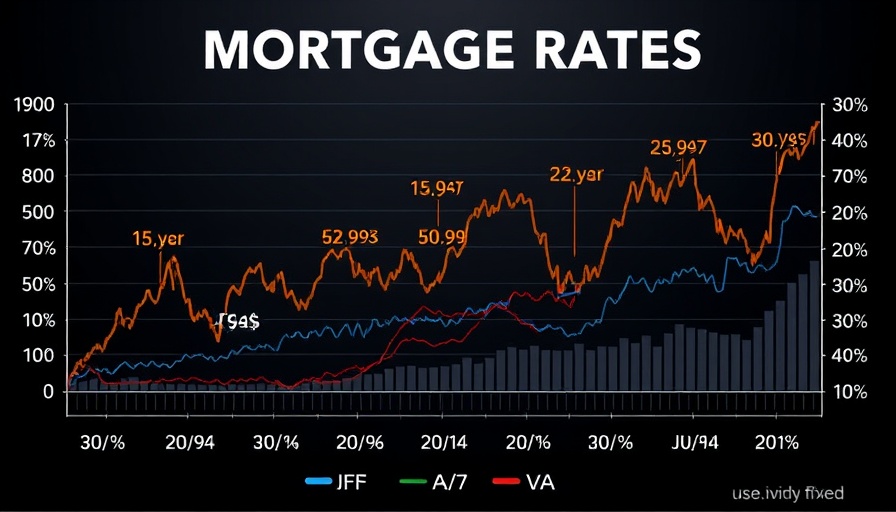
Mortgage Rates Remain Steady Amidst Market Uncertainty
In a week characterized by relative stability, mortgage rates have stayed notably flat, reflecting a broader trend in the bond market influenced by external economic conditions. The absence of significant news regarding tariffs and trade has allowed mortgage rates to settle, following a week of volatility that saw one of the largest spikes in several months. The current average for a conventional 30-year fixed mortgage rate hovers just under 7%, as lenders aim to maintain stability amidst a landscape of fluctuating economic signals.
The Impact of Economic Commentary on Mortgage Rates
Recently, high-profile comments—particularly from former President Trump regarding the Federal Reserve—have historically rattled financial markets. Such statements can trigger immediate responses, leading to fluctuations in mortgage interest rates. Just as markets were recalibrating from the previous rate surge, Trump's remarks sent rates on a potential upward trajectory. However, following a swift absorption of those comments into the market, no further escalations ensued, allowing rates to stabilize again. This incident serves as a reminder of how intertwined political discourse and economic policy can be, especially concerning public sentiment about financial stability.
Understanding Why Today’s Rates are a Sign of Calm
Today's mortgage rates reflect an unprecedented calm. For mortgage lenders, rates are typically adjusted once daily, depending on market volatility. The lack of significant bond market movement in today's trading session has resulted in consistent mortgage rates across the board, a rare occurrence that can offer both lenders and consumers a moment of respite. For potential homebuyers or those looking to refinance, this steadiness indicates a carefully balanced market environment, conducive to making informed financial decisions.
Historical Context: Mortgage Rate Trends
Historically, mortgage rates have experienced cycles of rapid increases and declines. The current situation must be viewed in the context of recent years where, following aggressive rate hikes, markets saw a stabilization phase. Understanding these historical trends helps contextualize today's average rates and gives both consumers and industry stakeholders insight into possible future movements. The continuous fluctuation of rates often serves as a barometer for broader economic conditions, making it crucial to monitor these indicators closely.
Market Insights: Predictions for Mortgage Rates
As we move further into the year, economic analysts predict that mortgage rates may continue to hover around current levels, provided that external conditions do not introduce unexpected volatility. Various factors, including ongoing economic recovery, inflation rates, and shifts in fiscal policy, will invariably influence the trajectory of mortgage rates. Stakeholders in the housing market must remain alert to these evolving dynamics, as they will play a pivotal role in both short-term purchases and long-term investments.
What This Means For Homebuyers
For prospective homebuyers or those considering refinancing, a stable interest rate like the current 6.98% presents a potential window of opportunity. It is essential to evaluate individual financial readiness and market conditions before making purchasing decisions. Financial advisors recommend clarity about personal budgets and future expectations before entering into commitments in today's cautious market environment. This is particularly imperative given the potential for last-minute shifts that can occur based on economic developments.
Conclusion: Stay Informed and Prepared
The current landscape for mortgage rates may lead to cautious optimism among consumers and investors. As rates hold steady, it's an awakened call for homebuyers to capitalize on available opportunities. Remaining informed through mortgage rate alerts or updates from financial news platforms can empower decisions that align with long-term financial goals. To navigate these ever-evolving circumstances successfully, being proactive is as crucial as understanding the macroeconomic factors at play.
 Add Row
Add Row  Add
Add 




Write A Comment